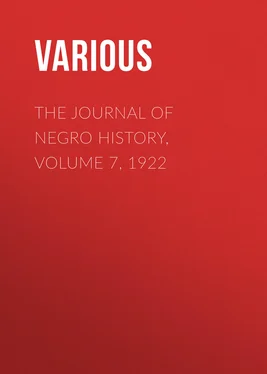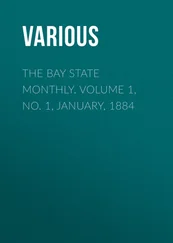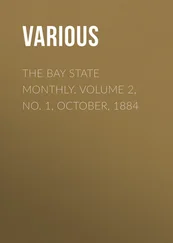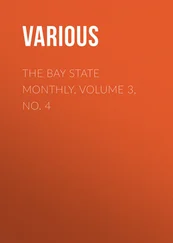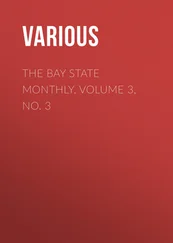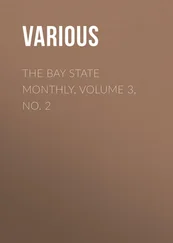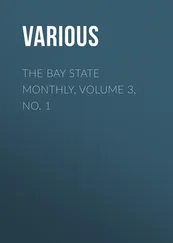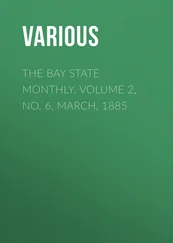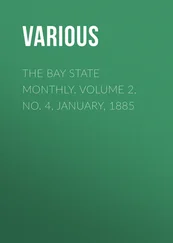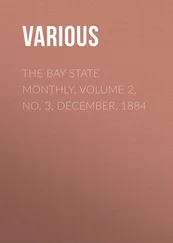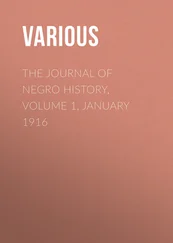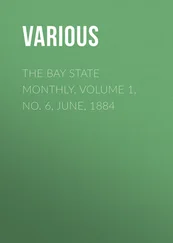Various - The Journal of Negro History, Volume 7, 1922
Здесь есть возможность читать онлайн «Various - The Journal of Negro History, Volume 7, 1922» — ознакомительный отрывок электронной книги совершенно бесплатно, а после прочтения отрывка купить полную версию. В некоторых случаях можно слушать аудио, скачать через торрент в формате fb2 и присутствует краткое содержание. Жанр: foreign_antique, periodic, История, foreign_edu, на английском языке. Описание произведения, (предисловие) а так же отзывы посетителей доступны на портале библиотеки ЛибКат.
- Название:The Journal of Negro History, Volume 7, 1922
- Автор:
- Жанр:
- Год:неизвестен
- ISBN:нет данных
- Рейтинг книги:3 / 5. Голосов: 1
-
Избранное:Добавить в избранное
- Отзывы:
-
Ваша оценка:
- 60
- 1
- 2
- 3
- 4
- 5
The Journal of Negro History, Volume 7, 1922: краткое содержание, описание и аннотация
Предлагаем к чтению аннотацию, описание, краткое содержание или предисловие (зависит от того, что написал сам автор книги «The Journal of Negro History, Volume 7, 1922»). Если вы не нашли необходимую информацию о книге — напишите в комментариях, мы постараемся отыскать её.
The Journal of Negro History, Volume 7, 1922 — читать онлайн ознакомительный отрывок
Ниже представлен текст книги, разбитый по страницам. Система сохранения места последней прочитанной страницы, позволяет с удобством читать онлайн бесплатно книгу «The Journal of Negro History, Volume 7, 1922», без необходимости каждый раз заново искать на чём Вы остановились. Поставьте закладку, и сможете в любой момент перейти на страницу, на которой закончили чтение.
Интервал:
Закладка:
73
One has said that not long thereafter they employed as temporary pastor the Rev. Mr. Nickens, whose coming being unacceptable to some members of the congregation, caused about thirty to secede, organizing a church by themselves. These seceding members were expelled and, as the church property was deeded to the members of the church, there ensued a controversy as to the title of the church, which for a number of years was in litigation between the mother church and her offspring. See the Special Report of the United States Commissioner of Education on the Schools of D. C. , 311.
74
During his school days Rev. Harvey Johnson of Baltimore was a follower of the Nineteenth Street Baptist Church.
75
This account was given by the present pastor of this church, Dr. W. H. Brooks.
The deacons during Dr. Brooks's pastorate have included some of the foremost men in the community. Such men are William Coke, who was a deacon in 1840, John H. Beale, Nathaniel Gilmer, Henry Jarvis, Linsey Muse, Albert Parker, William P. Pierre and William Syphax, while among the trustees will be recalled Carter A. Stewart, Charles Lemos, David Clark, William B. Brooks, W. A. Johnson, Edgar Ball and John H. Hunter. Among the local churches either directly or indirectly originated in the Nineteenth Street Church are the Vermont Avenue, the Metropolitan, Berean, Pilgrim of Brentwood, Salem and Israel Baptist Churches.
76
The following persons constituted the church: John F. Cook, David Carroll, Jane Noland, Mary Ann Tilghman, Clement Talbert, Lydia Williams, Elizabeth Carroll, Ann Brown, Charles Bruce, Basil Gutridge, Clarissa Forest, John Madison, Catherine Madison, Ann Chew, Ruth Smith, Emily Norris, Maria Newton, Alfred Cook and Eliza Stewart.
[19] See F. J. Grimké's Anniversary Address on the Occasion of the Seventy-fifth Anniversary of the Fifteenth Street Presbyterian Church .
77
A statement verified by the present pastor, Dr. J. L. S. Holloman.
In 1883 Dr. William Bishop Johnson accepted the call to the pastorate which, notwithstanding its nearly forty years of struggle, had been reduced to a membership of less than one hundred. During Dr. Johnson's pastorate a church edifice was erected in 1895 at a cost of $75,000, one of the largest and most imposing in the city. An outstanding feature of Dr. Johnson's administration was the organization of a Sunday School Lyceum in 1885 which was one of the most popular literary organizations in the Capitol, meeting Sunday afternoons, when there were discussions of some foremost topic by representative thinkers of both sexes and races. Notable among the presidents of the Sunday School Lyceum were Mr. Jesse Lawson, Mr. R. D. Ruffin, and Mr. R. W. Thompson, the newspaper correspondent. Johnson died in 1917 mourned by the congregation and community as one of its leading preachers. Through his administration of the affairs the church became one of the best known throughout the country because of the organizing abilities of the pastor and his unusual ability. In 1917 the church called as pastor Dr. J. L. S. Holloman of Winton, North Carolina. During his four years of service the church has been practically freed of debt and has entered on a new era of progress.
78
The present building was erected about 1886, by Dr. R. H. G. Dyson. The present pastor is Rev. H. J. Callis, who easily takes rank in the city as one of its leading public-spirited influences.
79
This story is taken largely from records preserved by Mr. B. J. Grant, one of the oldest members of this church.
80
At the present time this plot of ground is covered by the Ebenezer A. M. E. Church.
81
Two years later they erected another story, which remained intact until the church was sold. The remodeling and addition cost $1,100. This property proved to be very valuable, as they decided after many years to make it one of its most fashionable thoroughfares. Bought for almost a pittance, this property had advanced in value to such an extent that the business interests offered a high price for it and it was sold.
82
A new edifice is being favorably considered to accommodate the growing congregation. A building fund has been started for this purpose.
83
This account was taken from the records of the Third Baptist Church.
84
There were elected the following officers in 1885: W. C. Laws, Joseph Jones, Henry Hughes, James H. West, Daniel Lewis, Moten Waites, and Joseph Montgomery. P. H. Umbles officiated during the vacancy of the pulpit occasioned by the death of Mr. Jefferson, which occurred in October, 1885.
On March 19 James H. Lee of New Bedford, who had formerly been connected with the Third Baptist Church, was called to the pastorate. He accepted and preached his inaugural sermon May 9 and was installed on May 30. During the first seven years of his administration 242 members were received by baptism, 49 by letter, 62 by experience, 59 by restoration. In the same period 24 were dismissed by letter, 65 excluded and 117 lost by deaths. A debt of $3,475.55 was paid during this period including balance due on site. The collections aggregated $28,729.
85
The following officers were then in charge: Deacons W. L. Laws, Daniel Lewis, Joseph Jones, Joseph Montgomery, James H. West, Henry Hughes, and Moten Waites; and Trustees Alexander Peyton, Henry C. Bolden, William Reynolds, Ottowa Nichols, Richard Basey, George Duff and Dennis Johnson. After the death of Rev. James H. Lee, Rev. Mr. Bullock became the pastor.
86
James L. Pinn is the present pastor, having served since September, 1916.
87
Records of the Shiloh Baptist Church.
88
About a year before the church was organized a number of Baptists, who with their children afterward formed the church, met in a little shanty situated at that time on the south side of L Street, just across from the present church house, and under the direction of J. McCleary Perkins, a white Union soldier, formed a Sunday School. The members of this Sunday School were largely adults of African descent, while the teachers were from both races. The Bible was the book from which morals and religion were taught, and Webster's blueback speller was the constant companion of children and parents while they were learning to read the Word of God. James H. Payne succeeded Mr. Perkins as Superintendent of this school, and six months thereafter John M. Washington succeeded Payne. These two men alternated as superintendents of this Sunday School for ten or twelve years, and worked together faithfully until they succeeded in building up a flourishing institution.
89
Those who were in the original company that founded the church were Washington Whitlow, John J. Taylor, J. Mason Wilson, George Armstead, Edward Brook, Clement Morgan, Henry Frazier, Henry D. Payton, Griffin Saunders, Alfred Pendleton, James H. Payne, James G. Semple, Jane Brown, Elizabeth Morgan, Annie Armstead, Lucy Davis and Rev. William J. Walker.
90
The Moderator then informed the members of Shiloh that the Council was ready to hear their statement, whereupon Henry Frazier, the senior deacon of the newly formed church, gave a history of the organization and prosperity of Shiloh Baptist Church in Fredericksburg, from which the members forming the new church had come. William J. Walker, who had been associated with the Fredericksburg church for about twelve years, presented some interesting facts, and added: "These brethren, who have been driven from their homes and scattered among strangers, long to be gathered into a church, that they may worship God unitedly as they formerly did." Thereupon A. Rothwell offered the following resolutions which were unanimously passed:
Читать дальшеИнтервал:
Закладка:
Похожие книги на «The Journal of Negro History, Volume 7, 1922»
Представляем Вашему вниманию похожие книги на «The Journal of Negro History, Volume 7, 1922» списком для выбора. Мы отобрали схожую по названию и смыслу литературу в надежде предоставить читателям больше вариантов отыскать новые, интересные, ещё непрочитанные произведения.
Обсуждение, отзывы о книге «The Journal of Negro History, Volume 7, 1922» и просто собственные мнения читателей. Оставьте ваши комментарии, напишите, что Вы думаете о произведении, его смысле или главных героях. Укажите что конкретно понравилось, а что нет, и почему Вы так считаете.
